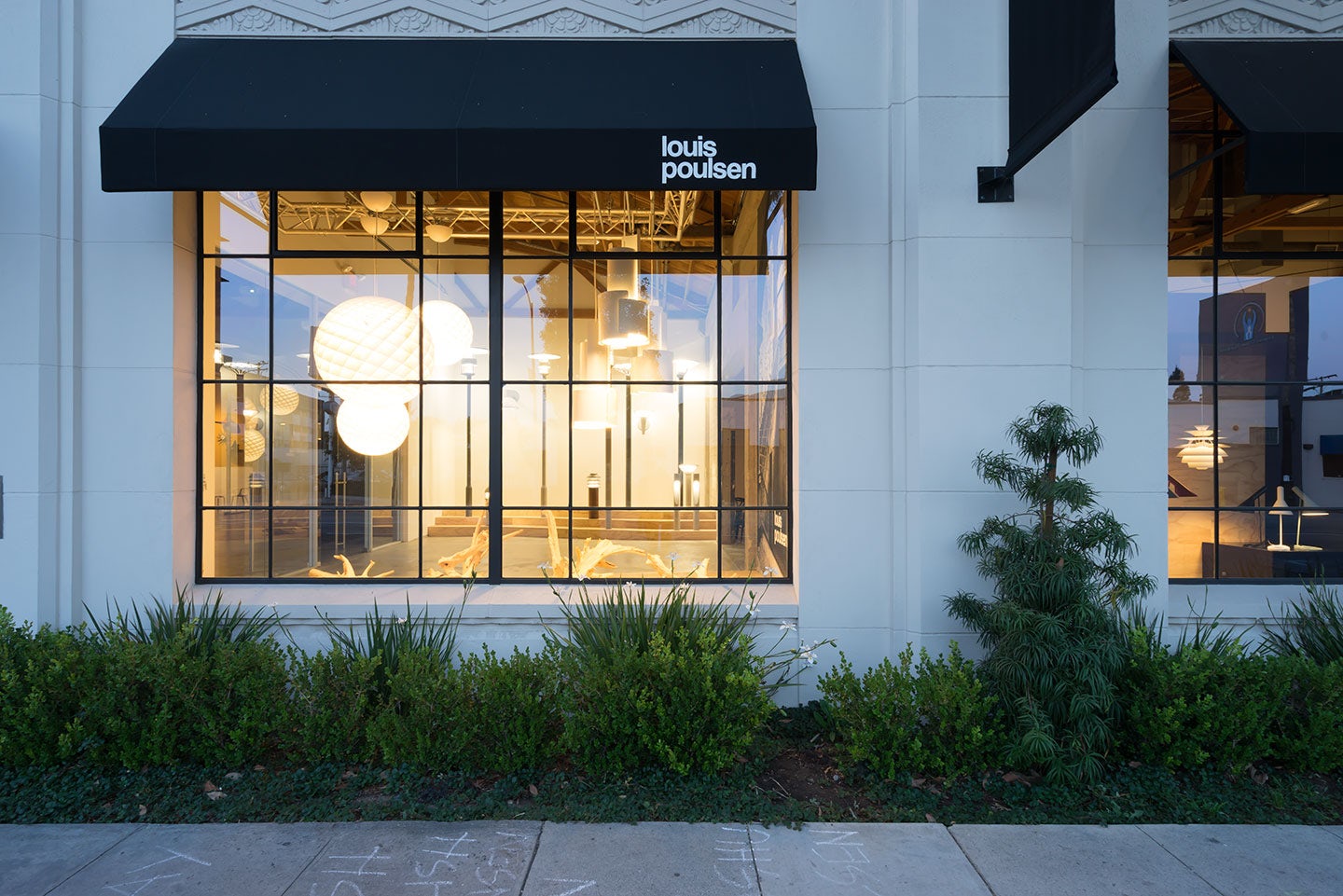The 158-year-old lighting brand Louis Poulsen is making a major investment in the U.S. market with its first-ever permanent brick-and-mortar stateside showroom in Los Angeles. Positioned in the Helms Bakery District, a design hub of the sprawling metropolis, the grade-level showroom is the first step in a series of efforts that will increase brand awareness and market presence of the Louis Poulsen brand in North America.

All photos by Henri Khodaverdi / courtesy Louis Poulsen
According to Global CEO Christian Engsted, and President and CEO of Louis Poulsen in the U.S., Kent Pedersen, Louis Poulsen is also investing in marketing and education for its existing — and eventually new — design communities. “The United States is our second-largest market, and California is our best-performing state,” Engsted says. Following the City of Angels launch, where the brand can leverage strong relationships, a thriving design community and an easily accessible airport, the company encouraged additional markets on a 2016 Spring Roadshow to New York, San Francisco, Dallas and Boston.

Prior to the 2008 economic recession, the commercial and specifier market drove 90 percent of Louis Poulsen’s business in the U.S. Today, the brand’s leadership is taking note of success stories in Denmark and Japan, which command 60 and 90 percent of its residential business, respectively, and the emerging trend of traditionally commercial brands gaining share of residential markets, such as Herman Miller’s partnership with DWR. “We don’t see why we can’t hit these standards in the U.S.,” Engsted says.

To achieve this growth, Engsted and Peterson outlined an educational strategy starting with architects and designers that can trickle down to retailers and consumers. The strategy begins with educating specifiers on the quality of light that Louis Poulsen fixtures produce dating back to the beginnings of the brand we know today, such as the company’s first pendant designed by Poul Henningsen in 1925. While training as an architect during the early 20th century and the infrastructural advent of electricity in Denmark, Henningsen was bothered by the harsh, direct light of the electric light bulb. His solution was to design a shade that hangs over the bulb, obscuring the light source while delivering reflected light onto the surface below with ample ambient light through the sides. This pendant, the PH lamp, is still in production and has been enhanced for a 2016 release.

In addition to investments in real estate, marketing and education, Louis Poulsen is quintupling its annual new product releases for 2016. “Historically, we have launched two or three products per year,” says Engsted. This year Louis Poulsen will launch 15 new products: a mix of revamped and original designs from Poul Henningsen, contemporary architects, industrial designers and lighting designers in a style that remains true to the brand’s origins. Here’s just a sampling:

Skyline by Julie Richoz
The 28-inch-diameter powder coated aluminum pendant, which designer Richoz describes as “a frozen moment,” plays on contrast and shadow. Gradual curves and hidden assembly conceal the light source while delivering direct illumination to the floor and ambient light to surrounding planes. It is currently available in white.
Patera by Øivind Slaatto
Inspired by the sun and the Fibonacci sequence, Slaatto’s lightweight, spherical pendant is balanced yet asymmetrical and follows the Henningsen tradition: Direct and reflected light illuminates surfaces below while providing ambient glow to all other planes. What’s most important, Slaatto says, is that the shade “changes the quality of light.” The result of five days of prototyping, Patera is comprised of 30 sheets of lightweight plastic cut in three different shapes snapping into place without any joinery or fasteners.

Skyline (left) and Patera (right)
LP Grand by Christian Flindt
The largest in scale of Louis Poulsen’s 2016 product releases, these dimmable light fixtures come in 58-, 34- and 23-inch sizes; the smallest can also be wall mounted. Designed for larger institutions and commercial installations, such as universities and open offices, its output averages 22,000 lumens, or the equivalent of two street lamps. Available in three finishes — matte black, glossy white and metallic champagne — the injection-molded fixture is paired with a polyurethane shade.

LP Grand




